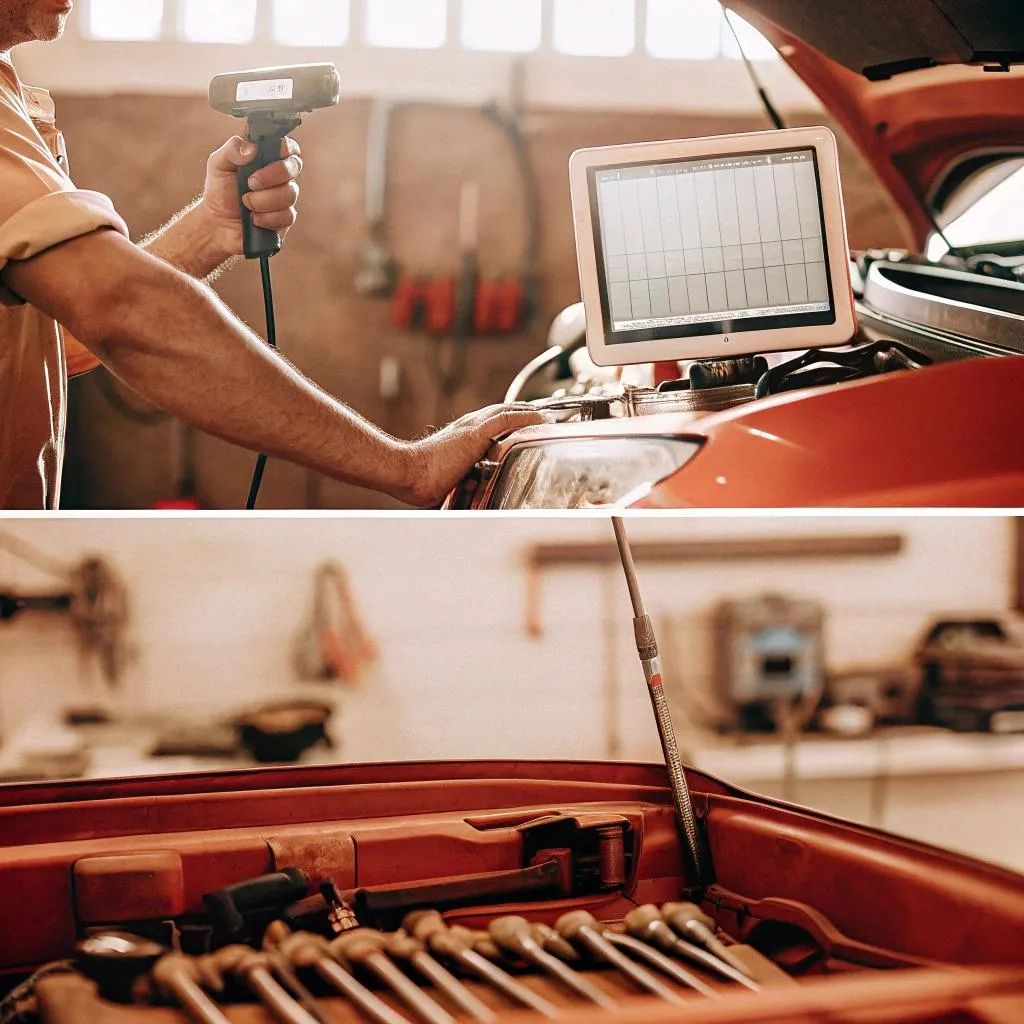See Our Latest Blogs
Welcome to Your Ultimate Resource for Vehicle Maintenance and Repair

From Basics to Breakthroughs: The History of Vehicle Diagnostics
From Basics to Breakthroughs: The History of Vehicle Diagnostics
The evolution of vehicle diagnostics has undergone a remarkable transformation, progressing from rudimentary inspections to sophisticated real-time monitoring systems. Understanding the historical milestones and technological advancements that have shaped the automotive diagnostic landscape can help us appreciate how far we’ve come and where we’re headed in maintaining vehicle performance and reliability.
Early Developments in Vehicle Diagnostics
The journey of vehicle diagnostics began in the late 19th century:
1885: Karl Benz introduced the Motorwagen, the first gasoline-powered automobile. At this stage, diagnostics were limited to basic mechanical inspections and manual checks, relying heavily on the mechanic’s experience and intuition.
1968: Volkswagen made a significant leap by incorporating the first on-board computer in their Type 3 vehicle. While this early computer lacked diagnostic capabilities, it laid the groundwork for the electronic systems that would revolutionize automotive maintenance.
Pioneering Advancements in the 1980s and 1990s
The 1980s and 1990s were pivotal decades for vehicle diagnostics:
1980s: General Motors pioneered the introduction of the first data link and Diagnostic Trouble Codes (DTCs). These codes allowed mechanics to pinpoint issues more accurately, making repairs faster and more effective. This innovation represented a major step forward in integrating electronic systems with traditional mechanical diagnostics.
1996: The implementation of the OBD-II (On-Board Diagnostics II) standard was a game-changer for the automotive industry. By establishing a universal connector and communication protocol, OBD-II enabled mechanics to diagnose vehicles from various manufacturers with standardized tools, reducing repair costs and enhancing efficiency for consumers.
The OBD-II Revolution and Its Impact
The introduction of OBD-II transformed vehicle diagnostics in several critical ways:
Standardization: With a unified diagnostic framework, mechanics could diagnose vehicles from different manufacturers using the same tools, streamlining processes and reducing complexity.
Emissions Monitoring: OBD-II introduced real-time monitoring of emissions-related systems. This ensured vehicles complied with environmental regulations throughout their lifespan, contributing to improved air quality.
Consumer Empowerment: By providing vehicle owners with access to diagnostic information, OBD-II gave them greater control over repair decisions. This transparency fostered competition among service providers and encouraged better maintenance practices.
Modern Innovations in Vehicle Diagnostics
Today, advancements in vehicle diagnostic technology continue to push boundaries, enhancing accuracy and convenience:
Snap-on Diagnostic Tools: State-of-the-art tools like the, Topdon, ZEUS+™ and APOLLO-D9™ offer advanced data analysis, real-time diagnostics, and user-friendly software that streamline repair processes for technicians.
Bluetooth Scanners: Devices such as the BlueDriver Bluetooth Pro enable wireless connectivity, allowing users to access detailed vehicle data and diagnostics through mobile apps. This empowers car owners to monitor their vehicles' health with ease.
Enhanced OBD-II Capabilities: Emerging protocols like WWH-OBD are expanding the range of data available, integrating more parameters for comprehensive vehicle monitoring. These enhancements improve diagnostic accuracy and enable proactive maintenance.
Looking Ahead
The history of vehicle diagnostics reflects a journey of continuous innovation, from basic mechanical checks to advanced technologies capable of real-time issue detection. The introduction of OBD-II not only standardized diagnostics but also paved the way for modern tools that empower consumers and improve emissions monitoring.

If you found this exploration fascinating, check out how Smart Maintenance Solutions is leveraging these innovations to revolutionize vehicle care. Our expert diagnostics ensure your vehicle stays in top shape—because your safety and efficiency are our priorities. Dive deeper into the future of automotive care by visiting our website today.
Introduction
Welcome to our blog, where we're dedicated to sharing expert tips, insights, and the latest news in vehicle maintenance and repair. Whether you're a corporate fleet manager or a private vehicle owner, our goal is to be your go-to resource for keeping your vehicles running smoothly and efficiently.
Our Mission
Our mission is simple: to provide you with valuable, accurate, and practical information that helps extend the life of your vehicles and keeps them in top condition. We understand that whether it’s a single family car or an entire fleet of corporate vehicles, maintenance and repair are crucial for safety, efficiency, and long-term cost savings.
What We Offer
Expert Tips: From seasoned mechanics and industry experts, our blog offers advice on everything from routine maintenance to troubleshooting complex issues.
Insights: We delve deep into the automotive world to bring you insights on the latest trends, technologies, and best practices in vehicle care.
News and Updates: Stay informed with the latest news in automotive technology, upcoming regulation changes, and what they mean for your vehicle maintenance and repair strategies.
DIY Guides: For those who love to get their hands dirty, our easy-to-follow DIY guides will help you tackle basic maintenance and repairs at home.
Product Reviews: Get unbiased reviews on the latest tools, gadgets, and products in the automotive market.
Community and Interaction
We believe in the power of community. That’s why we encourage our readers to interact, share their own experiences, and ask questions. Whether you’re a seasoned professional or a car maintenance newbie, your insights and queries are what make this blog a rich resource.
Our Programs
Support
Planning
Coordination
Monitoring
Reporting
Dispatching
Follow Us
Contact Us
Copyright 2023 - Proficiencia Holdings Limited (JA) - All rights reserved

